A luminous black hole already classified as an active galactic nucleus brightened suddenly in recent ground and space observations, and the cause may be due to a sudden flip in the magnetic poles. Plus, community science, rockets, Ingenuity, and an interview with Dr. Cathy Weitz from Planetary Science Institute.
Podcast
Show Notes
Community scientists find 1700 asteroids
- ESA Hubble press release
- Max Planck Institute press release
- “Hubble Asteroid Hunter – I. Identifying asteroid trails in Hubble Space Telescope images,” Sandor Kruk et al., 2022 May 6, Astronomy & Astrophysics
Rocket Update: 10 May 2022
- CASC press release
- Starlink 4-17 mission page (SpaceX)
- CASC press release
Ingenuity back in contact with Perseverance
Black hole flips magnetic field
- CU Boulder press release
- NASA press release
- “Magnetic flux inversion in a peculiar changing look AGN,” Nicolas Scepi, Mitchell C Begelman, and Jason Dexter, 2021 January 9, Monthly Notices of the Royal Astronomical Society
- “A radio, optical, UV and X-ray view of the enigmatic changing look Active Galactic Nucleus 1ES~1927+654 from its pre- to post-flare states,” Sibasish Laha et al., to be published in The Astrophysical Journal (preprint on arxiv.org)
Palette cleansing pretty Hubble picture
- NASA image release
Marker horizon on Mars discovered at Mount Sharp
- PSI press release
- “Orbital Observations of a Marker Horizon at Gale Crater,” Catherine M. Weitz et al., 2022 March 31, JGR Planets
Transcript
Welcome to another week at CosmoQuest, where all the rocket launches happen on the weekends.
We also have results from a community science project. And I have a glitching camera that makes me look like Max Headroom, so that’s exciting.
But I have good news about Ingenuity that we didn’t know we needed, and my camera is not glitching.
True. And then there’s this wild black hole that suddenly brightened and may change how we think about black holes in general.
All that and more, right here on the Daily Space.
I am your host Dr. Pamela Gay.
And I am your host Erik Madaus.
And we’re here to put science in your brain.
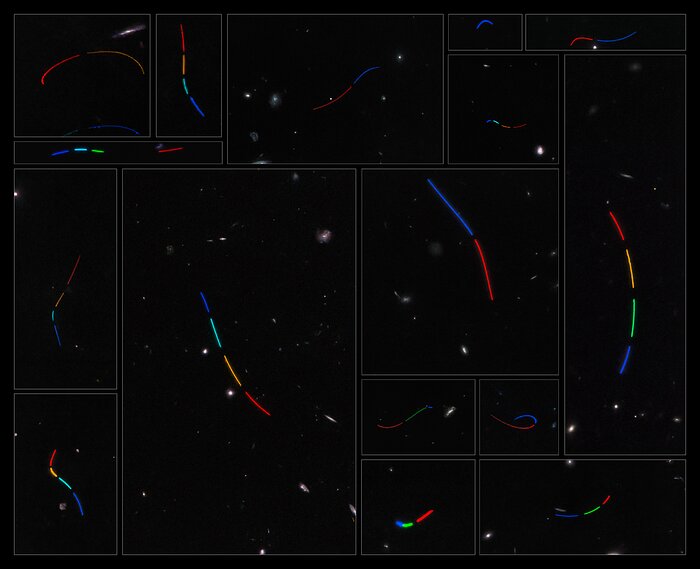
One of the core pillars of CosmoQuest is community, and within that pillar, we try to bring together community members and science projects. That’s a big reason why we’re going to, spoiler alert, take off a chunk of this summer – we want to bring community science back to CosmoQuest.
In the meantime, we can share results from others working with their communities to do amazing science, such as this first story that looks at results from the Hubble Asteroid Hunter project. Those results were published in the journal Astronomy & Astrophysics, and they detail the finding of asteroid trails in images taken by the Hubble Space Telescope.
Now, some of you are wondering how they used the Hubble, that glorious workhorse telescope that brought us several deep field looks at our universe, to find asteroids close to home. Here’s a quick summary: The project involved over 11,400 community astronomers looking at more than 37,000 composite images taken by Hubble from April 2002 to March 2021. The astronomers set out to identify asteroids based on their light trails, which appeared as streaks or curved lines in the images. From that run of images, the community identified more than 1,000 possible trails of asteroids, and those detections were used to train a machine-learning algorithm.
Overall, 1,701 light trails were discovered in 1,316 Hubble images. Of those roughly 1700 potential objects, a third were attributed by the Minor Planet Center to known asteroids, leaving over 1,000 small, faint potential asteroids. Most are allocated in the main asteroid belt between Mars and Jupiter.
These trails can now be used to calculate orbits, size, and even rotation periods, despite the fact that many can no longer be found with Hubble as too much time has passed between image collection and identification. With a little maths, however, even that is a problem that can be solved.
It really is fantastic what community scientists can do.
And now for some rockets. Erik?
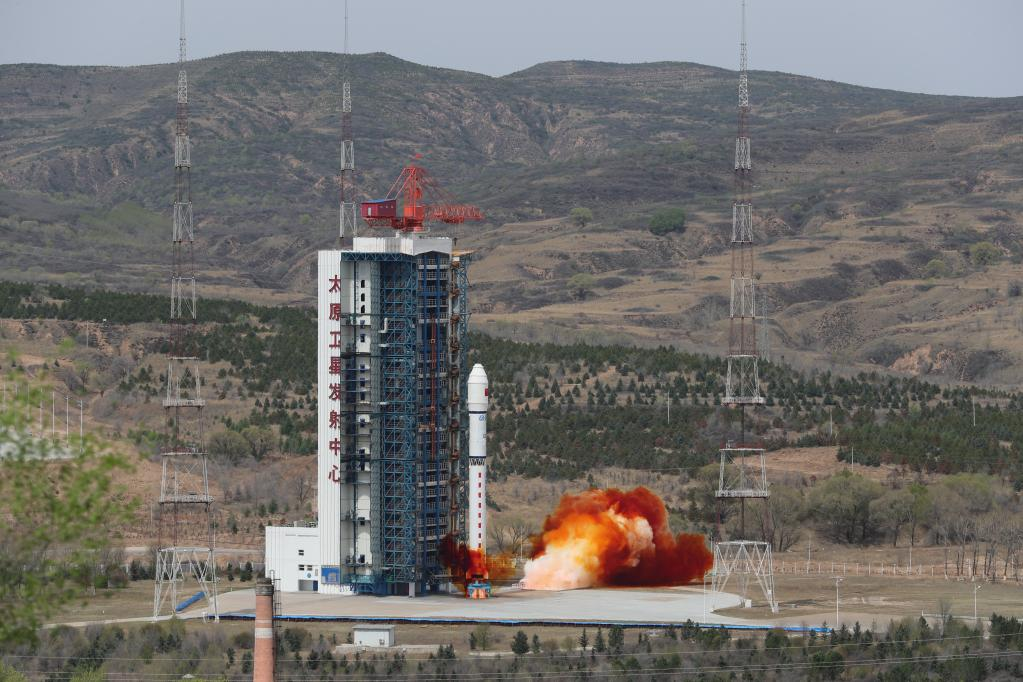
There were three launches over the weekend.
First up, a Long March 2D took off on May 5 carrying the Jilin 1 Kuanfu 1C imaging satellite and seven other smaller satellites from Taiyuan at 02:38 UTC. This launch debuted a new style of payload attach mechanism, to fit the 7 smallsats below the larger main satellite in the rocket’s fairing. The purpose of this is to completely use the rocket’s mass capability to orbit.
Second, SpaceX launched 53 more Starlink satellites on May 6 at 21:42 UTC, which was another twelfth flight of a booster – 1058, in this case. It has launched seven Starlink missions, among others. The launch also marked the 117th successful first stage landing, this time on the A Shortfall of Gravitas droneship.
The last launch over the weekend was another Chinese launch – the fourth Tianzhou resupply craft for the China Space Station. And we have the video for this one.
Tianzhou 4 launched on May 9 at 17:56 UTC on a Long March 7 from the Wenchang Satellite Launch Center on Hainan Island. Six and a half hours later, Tianzhou 4 docked to the Tianhe module, which is currently uncrewed. It joins Tianzhou 3 which is docked to the other end of the core module.
Tianzhou 4 carried about six metric tons of supplies to the station, which will be used by the Shenzhou 14 crew as they prepare for the “construction phase” of the station, where two more modules will be launched and docked to the station.
China expects five more launches in support of its space station program this year – two crewed spacecraft, the two modules, and one more uncrewed resupply. Similar to the Progress and Cygnus resupply spacecraft, Tianzhou will be filled with trash and deorbited into an empty part of the ocean at the end of its mission.
This Long March 7 launch campaign was quicker than the last, taking only 27 days. According to Chinese sources, the rocket has seventeen improvements, and the countdown was also quicker because both propellants were loaded into the vehicle simultaneously.
The two launches the past few days were the 419th and 420th Long March family launches.
Those are all the launches from the weekend. Now for one more piece of spacecraft news.
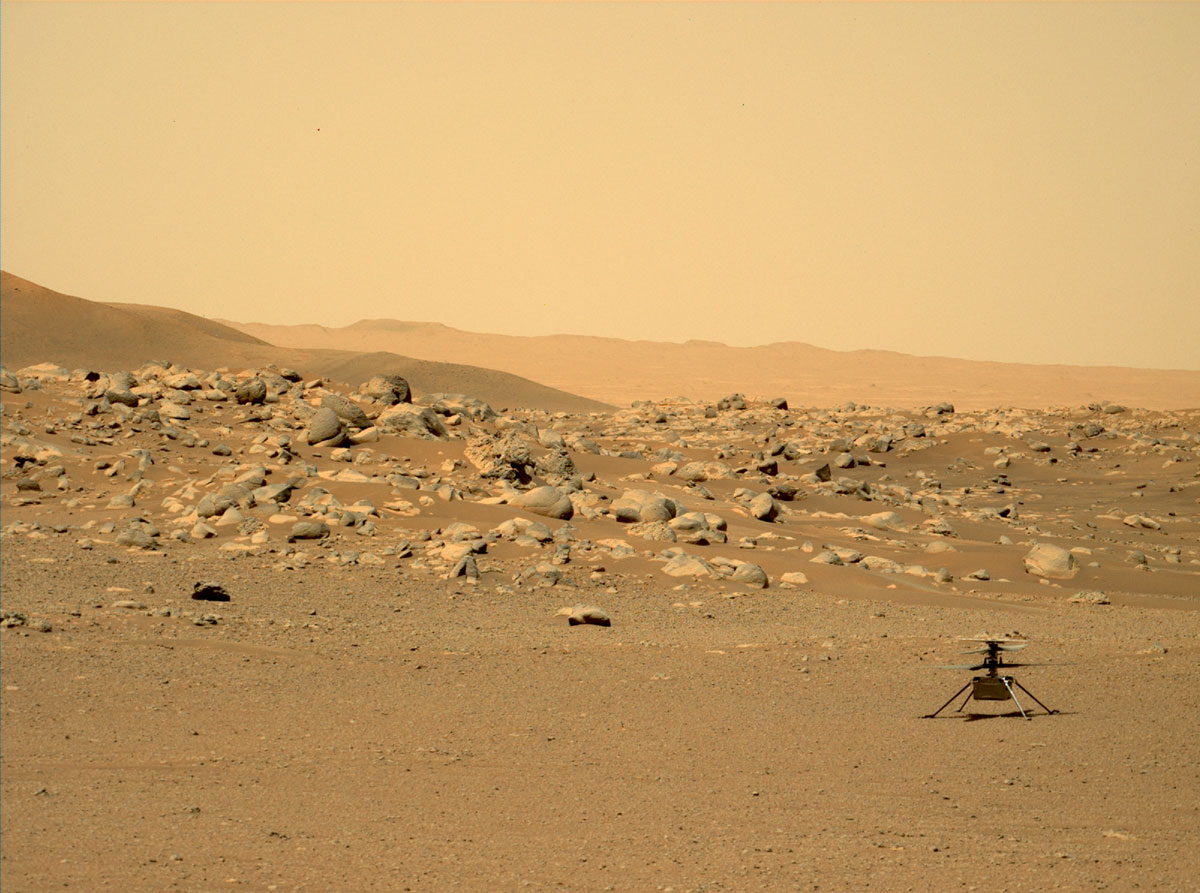
With all of the issues various spacecraft have had in the past couple of years, it’s nice to report on when something gets fixed. Of course, it helps that most of us didn’t know it was broken, to begin with, so yay for good news!
Last week, our favorite little Mars helicopter, Ingenuity, missed a planned communications session with the Perseverance rover. It was the first time an issue of this nature had occurred between the Mars-exploring pair, and as Percy is Ingenuity’s link to Earth, fairly troubling for the operations team.
But, as we said at the top of this story, the news is good. Ingenuity is talking to Percy again, and the ops team believes they have determined the cause of the anomaly. To very few people’s surprise, I’m sure, the answer was, as always, dust. The helicopter’s battery went into a low-power state because of diminished sunlight hitting the solar array. That triggered another array, which handles Ingenuity’s operational state, to power down. And that reset the internal clock and powered down the heaters. Oof.
Then the Sun came up, the solar array charged the batteries, everything turned back on, and that pesky clock was no longer synced with the one onboard Perseverance. The ops team set Percy to just listen for Ingenuity on May 5, caught the signal, and rejoiced that everything was back to nominal, for the moment.
There are growing concerns about how Ingenuity will manage during the oncoming Martian winter as the dust storm season approaches. The operations team is working on a plan that they hope will keep Ingenuity up and running. And team lead Teddy Tzanetos is optimistic, saying: Our top priority is to maintain communications with Ingenuity in the next few sols, but even then, we know that there will be significant challenges ahead. I could not be prouder of our team’s performance over the last year, let alone our aircraft’s incredible achievements on Mars. We are hopeful that we can accumulate battery charge in order to return to nominal operations and continue our mission into the weeks ahead.
Good luck, Ingenuity. Stay warm.
Coming up next, a galaxy whose black hole had a surge in brightness may shift how we understand black holes in general.
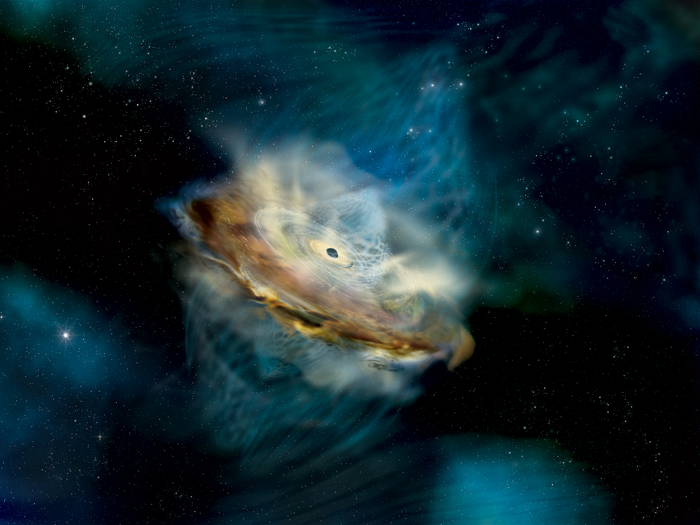
There is a running joke in astronomy that pretty much any talk can be thwarted by the simple question: What are the effects of a magnetic field?
I’ve known that joke my whole career, but I thought I had a good enough understanding to get the feel for things until today. My mental line drawings didn’t leave room for the concept of black holes somehow reversing their magnetic fields, and now, somehow, a team led by Sibasish Laha of NASA is suggesting this is exactly what some supermassive black holes in active galaxies are doing.
Let’s back up.
Here on Earth, we know from geological records that our magnetic poles generally wander about a bit, and every 200,000 years they flip. Our magnetic field is driven, in the most simplified terms, by convecting metals setting up loop after loop after loop of essentially electromagnetic fields and together aligning to create a single, averaged-out, planetary magnetic field.
It is possible for these loops to get out of alignment, and in the ensuing chaos, for their orientations to rearrange so that the magnetic field overall stays aligned – sorta – with the Earth’s rotation, but the specific north versus south magnetic pole flips. In my personal mental model, I always imagine one of those wild Ferris wheels where each car is free to rotate, and the entire wheel is also rotating. Small factors can add up to influence the cars to mostly go round and round one way or the other, but both rotations are possible within the mechanics of the overall rotation.
I also just like to think about riding roller coasters.
Anyway, that’s my mental model and stands up for thinking about the Earth and the Sun, but as we get out toward the kinds of magnetic fields that are associated with discs of material orbiting compact objects like neutron stars and black holes, my gut instinct, which is a lying liar at times, said we should have one orientation, and it should stay put. And from looking at the literature, there isn’t exactly a thriving community of folks modeling what would happen if a black hole’s magnetic field flipped like the Sun’s magnetic field.
But there are papers asking, “What if?” Not many, but some.
And there is also a weird thing sometimes observed in active galaxies with feeding black holes. Occasionally, these systems will brighten by nearly a factor of one hundred and then fade back to normal over just a few months. Called “Changing Look AGN,” because they change how they look and astronomers are terrible at naming things, a new paper led by Laha describes the brightening as a symptom of the magnetic field reversal at the central supermassive black hole.
This work is accepted to appear in The Astrophysical Journal.
Using computer models and observations that spanned from long radio wavelengths through to the super short X-ray colors of light, this team could test different theories against the data. They ruled out the idea, which I liked, of the black hole eating a star – the light profiles and timing just didn’t match. Instead, what they say, according to Jason Decter was: The field initially weakens at the outskirts of the accretion disk, leading to greater heating and brightening in visible and UV light.
They also saw the X-ray light turn off and then turn back on. This detail matches the specifics of a magnetic field reversal, where, to quote the NASA release on this work: As the flip progresses, the field becomes so weak that it can no longer support the corona – the X-ray emission vanishes. The magnetic field then gradually strengthens in its new orientation.
Why do some black holes flip their magnetic field? No idea. What causes this misbehavior? No idea? Do we need to worry about our supermassive black hole reversing its magnetic field? Probably not, but that is a gut feeling, and again, my gut is a lying liar.
In every astronomer’s life, there comes a day when the full weight of how little we know about magnetic fields suddenly weighs heavy.
For me, today was the day.

The universe is weird. I love to watch it, and I am grateful there are people working to get at the maths behind all the wonder we see — people who are not me.
Okay, before we chat about Mars, I think we need a pretty picture of that wondrous universe. If you have a small telescope, you may have enjoyed looking at the fuzzy blob M99. This not-too-distant galaxy is highlighted in a NASA image released this week. Combining data from multiple studies of this galaxy, this image allows us to take in the range of star formation, dust clouds, and brilliant stars that make up this system. There’s no new science here. Just the galaxy with all the prettiest stars.
From galactic horizons, let’s come back to our solar system and an interview with Cathy Weitz about the horizons of Mars.
Interview
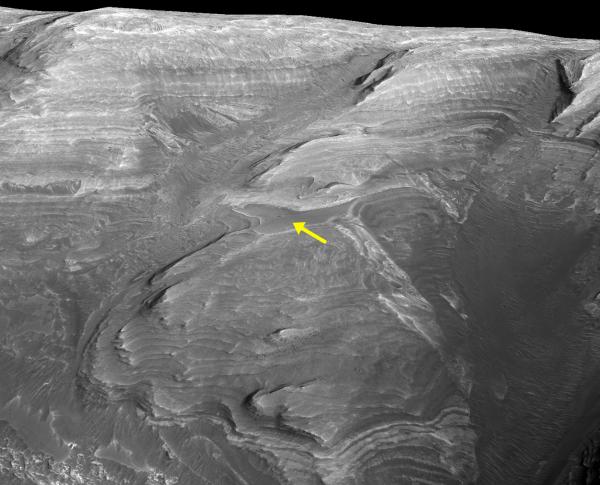
Last week, a press release was issued from the Planetary Science Institute about an intriguing darker layer of rocks on Mars at Mount Sharp, near where Curiosity is roving. This layer is “darker, stronger, flatter” than the surrounding sulfate-bearing rocks and has been observed using orbital data from the HiRISE camera onboard the Mars Reconnaissance Orbiter. The layer is also weathering differently than the layers above and below, suggesting it is made of a more erosion-resistant rock.
This discovery, of course, leads to the obvious questions about why and how that layer is different.
Joining me now to talk about possible answers to those questions is senior scientist Dr. Cathy Weitz, lead author of the paper published in the Journal of Geophysical Research: Planets.
Thank you for being here today, Dr. Weitz, and welcome.
[Transcript unavailable]
Once again, thank you, Dr. Weitz, for taking the time to speak with me today. I’m really interested in learning more about this marker horizon and the implications for Mars’s geologic history.
This has been the Daily Space.
To all of you watching, this conversation ran longer than we can air here on NowMedia. You can catch the interview in its entirety on our website, DailySpace.org.
While you’re there, check out our show notes to find more information on all our stories, including images. As always, we’re here thanks to the donations of people like you. If you like our content, please consider joining our Patreon at Patreon.com/CosmoQuestX.
Credits
Written by Pamela Gay, Beth Johnson, Erik Madaus, and Gordon Dewis
Hosted by Pamela Gay, Beth Johnson, and Erik Madaus
Audio and Video Editing by Ally Pelphrey
Content Editing by Beth Johnson
Intro and Outro music by Kevin MacLeod, https://incompetech.com/music/


 We record most shows live, on Twitch. Follow us today to get alerts when we go live.
We record most shows live, on Twitch. Follow us today to get alerts when we go live.